We are so excited to be building our DIY lithium batteries for our truck camper. So excited that it is easy to overlook some of the critical and slightly tedious first steps. Balancing a battery hadn’t even occurred to me when we set out on this project. But balanced batteries are an essential first step in maximizing the capacity and extending the life of our LiFePO4 batteries.
What Does it Mean To “Balance a Battery Cell”?
Battery cell balancing is the process of equalizing the voltage and charge of cells across a battery. When constructing a battery, we are assembling a collection of cells to work together as a single power source. Ideally, these cells are brand new with the same potential and wear. Realistically, even new cells will have some degree of variability that will become more apparent over their lifespan. To have these cells work well together as a single battery and wear evenly they have to be balanced. A cell with a limited capacity will fill up faster when charged and limit further charging of the other, healthier batteries. Alternatively, that same cell with a limited capacity will also discharge more quickly than the other cells, limiting any further discharge. Overcharging or over-discharging can result in permanent damage to all of the cells. Therefore, the weakest cell will determine the capacity of the entire stack. To get the most out of our cells, we balance them to serve our purposes best.
Basic Battery Balancing
Here’s a neat thing: battery cells will naturally balance themselves if they have the opportunity. I say “neat,” but this can be very dangerous. If two cells are at different voltage states, the cell with more voltage will discharge into the cell with less voltage. Connecting two lithium cells with a significant difference in charge could quickly send a large amount of current into the cell with the lowest voltage cell and cause damage to both. Our battery cells have been sitting in a corner for a while, allowing a lot of time to discharge. So, when we first hook up these cells, we need to be careful.
Our first foray into battery balancing begins with a simple prototype of our battery. Before diving into the official build, we want to make sure the entire system works and get a sense of how much space we need. Each of our batteries will be composed of 8 cells connected in series. It turns out, however, that series connections are far less tolerant of unbalanced cells. So we need to balance the cells in parallel first.
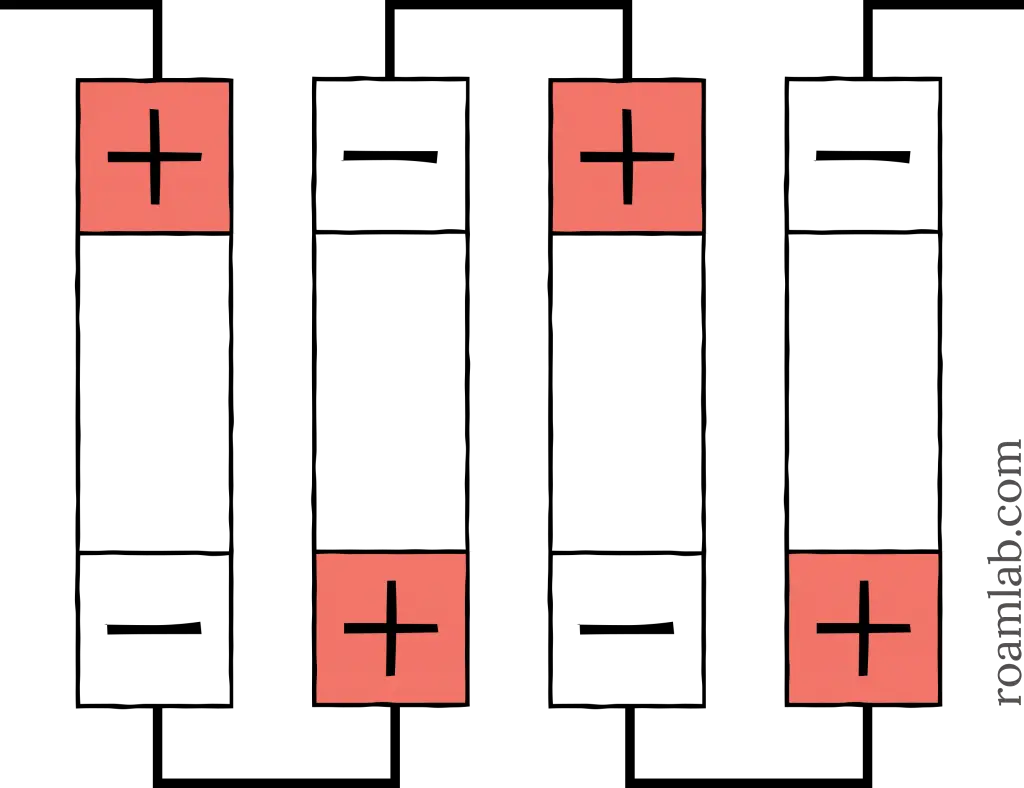

We use a multimeter to test, label, and sort all the battery cells in order of the voltage. Our batteries span 2.632 to 2.949-volts. That’s quite a variation. So, before we arrange them in series, we will balance them to bring the cells within a lower voltage variation.
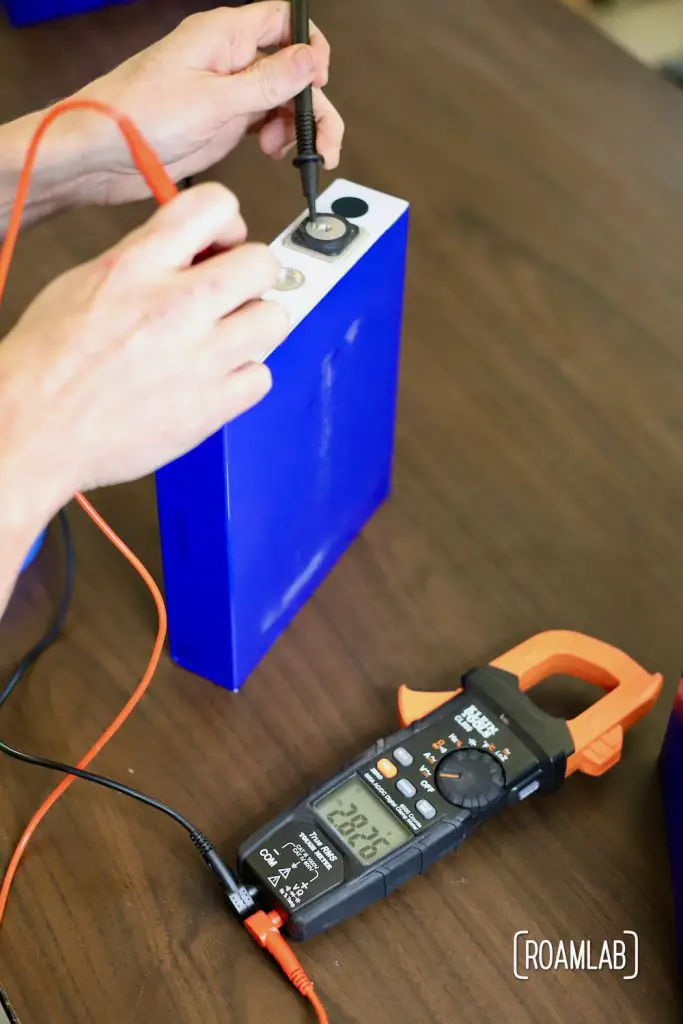
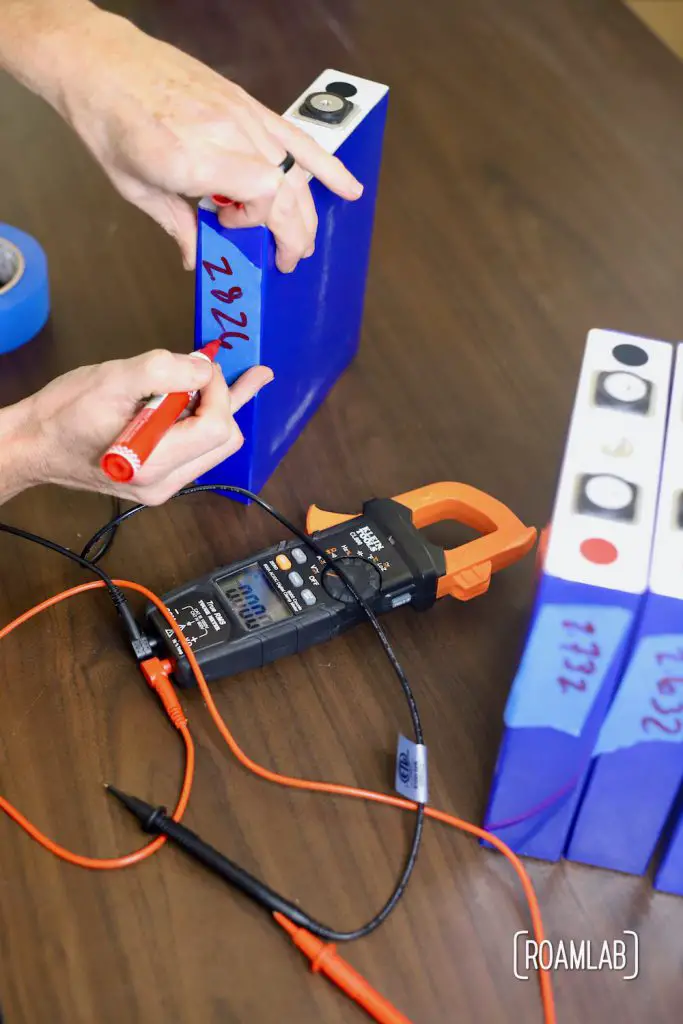
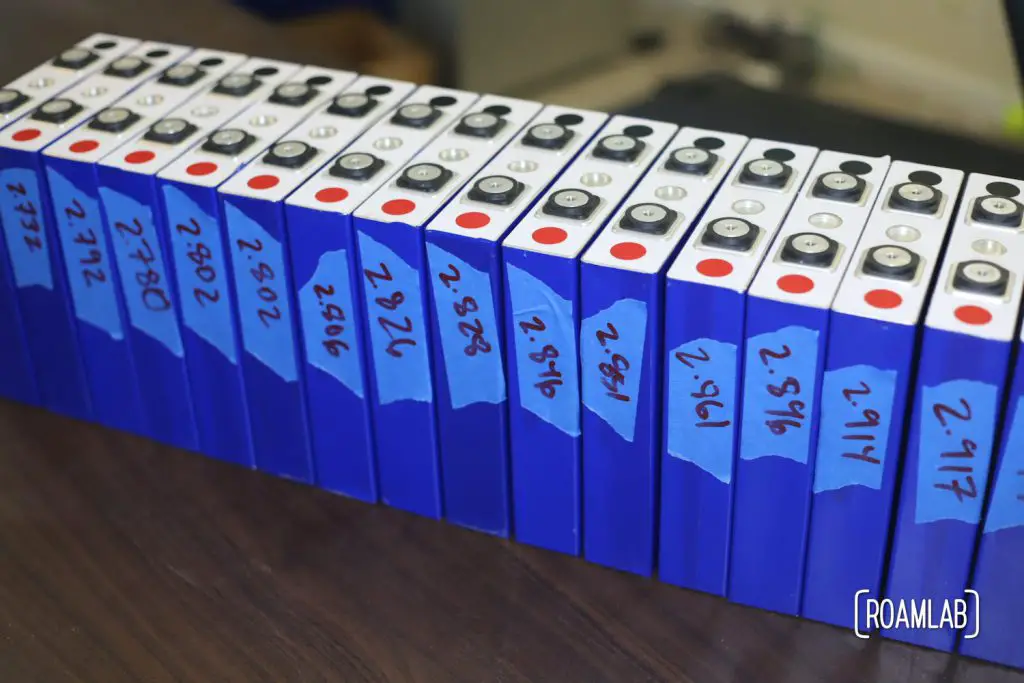
Balancing the Cells
There are many ways we can bring them to closer charge states. Honestly, it’s a fascinating rabbit hole to dive down. But we want to keep this reasonably simple. The most intuitive solution is to charge each cell to the same voltage and then hook them up. But when our batteries first arrive, we don’t have a charger that supports an individual 3.2V battery. Instead, we use a slower, low tech solution. We connect sets of all the battery cells in parallel to get them all closer to the same charge. Over time, the cells will naturally balance as higher voltage battery cells slowly discharge into lower-voltage cells. To avoid any potential damage to the cells, we split the stack into two sets of eight to balance the extreme outliers before moving on to the full set of sixteen. This method of balancing takes a long time, so we set the cells aside and check the voltage of each battery throughout the week.

Bottom Balancing vs. Top Balancing Your Battery Cell
To get the most out of our battery cells, we balance all the cells so that the battery will charge or discharge the maximum safe amount without harming the batteries. We can accomplish this in two ways: either top balancing or bottom balancing. When you top balance a battery, you are charging the cells to their full potential before hooking them up to make a single battery. Conversely, bottom balancing means that you discharge all the batteries to the same lowest safe state before connecting them. The decision to top balance vs. bottom balance a lithium battery pack depends primarily on how the battery will be used. Top balancing batteries tend to be the favored option for RVs, but there are reasons for both.
Why Top Balance a Battery Cell
Top balanced batteries operate best in scenarios when we want to optimize for charging. For example, solar panels can only charge batteries when the sun is present. During sunny days, it makes sense for the batteries to take in as much power as possible. So, a top balanced cell is optimized to get the most out of this charging period.
Why Bottom Balance a Battery Cell
Bottom balancing is popular among use cases that discharge the entire battery between each charge. For example, a cyclist will likely ride an electric bike until consuming all the battery power and then plug it back in. So, we want to optimize the batteries to discharge as much energy for that bike ride before leaving the rider with only pedal power.
Either way, the core takeaway is that it is essential to be balanced. Whether the batteries are top balanced or bottom balanced, having them at a similar charge state means the cells can perform to their limits. Whether that means charging cells to their maximum capacity or discharging to their minimum capacity, the worst outcome is that neither state is met.
Our Choice: We chose to top balance our battery cells as we are optimizing our system to rely primarily on solar power.
How to Top Balance Battery Cells
As with our initial setup to get the batteries within a similar average voltage, we prepare to top balance our cells by arranging all 16 of our battery cells in parallel. We hook the positive and negative terminals on the opposite ends to a power source and charge at the max charging voltage that our cells are rated: 3.65 volts.
It takes over a day to top off the batteries. As the batteries approach full charge, the output amperage drops, an indicator that we are close to complete. We can use our multimeter to check on a cell’s voltage. We could speed up the process by increasing the volts, but this is our first time building a lithium battery, and we don’t want to risk damaging the cells.
Automated Battery Balancing With A Battery Management System (BMS)
Even with all of this effort, battery cells can get out of sync throughout their charge and discharge cycles. Rather than occasionally dismantling our battery to rebalance the cells, we bring in a battery management system (BMS). The BMS is connected to each battery cell to monitor the state of the cells and help keep them in balance. Our next step is to hook up the cells to a battery management system that will keep the cells balanced and complete our lithium battery build.
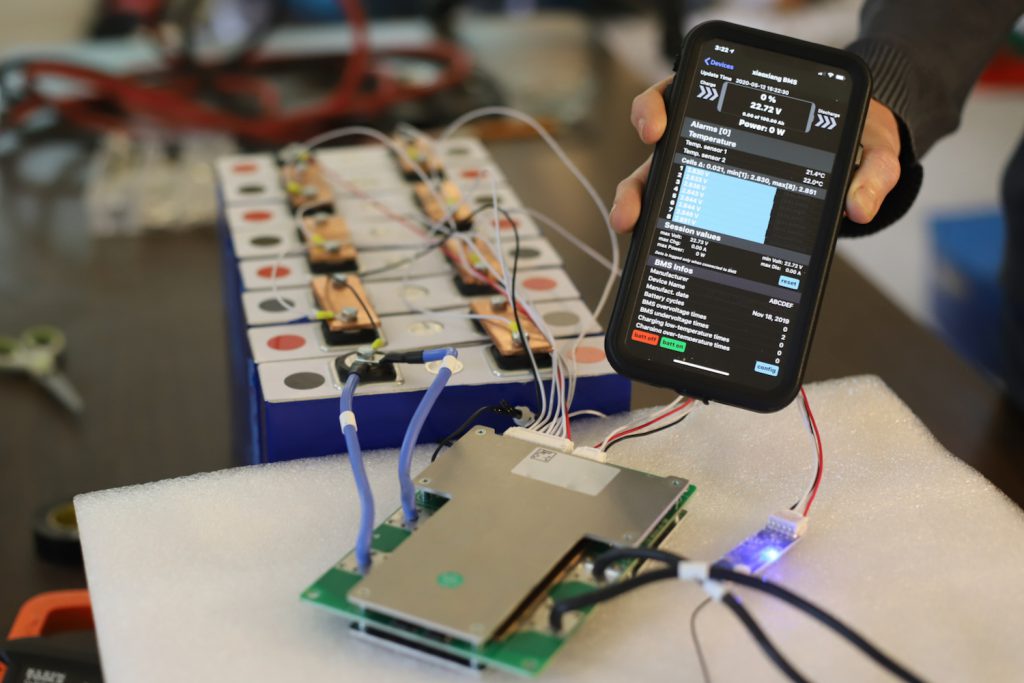


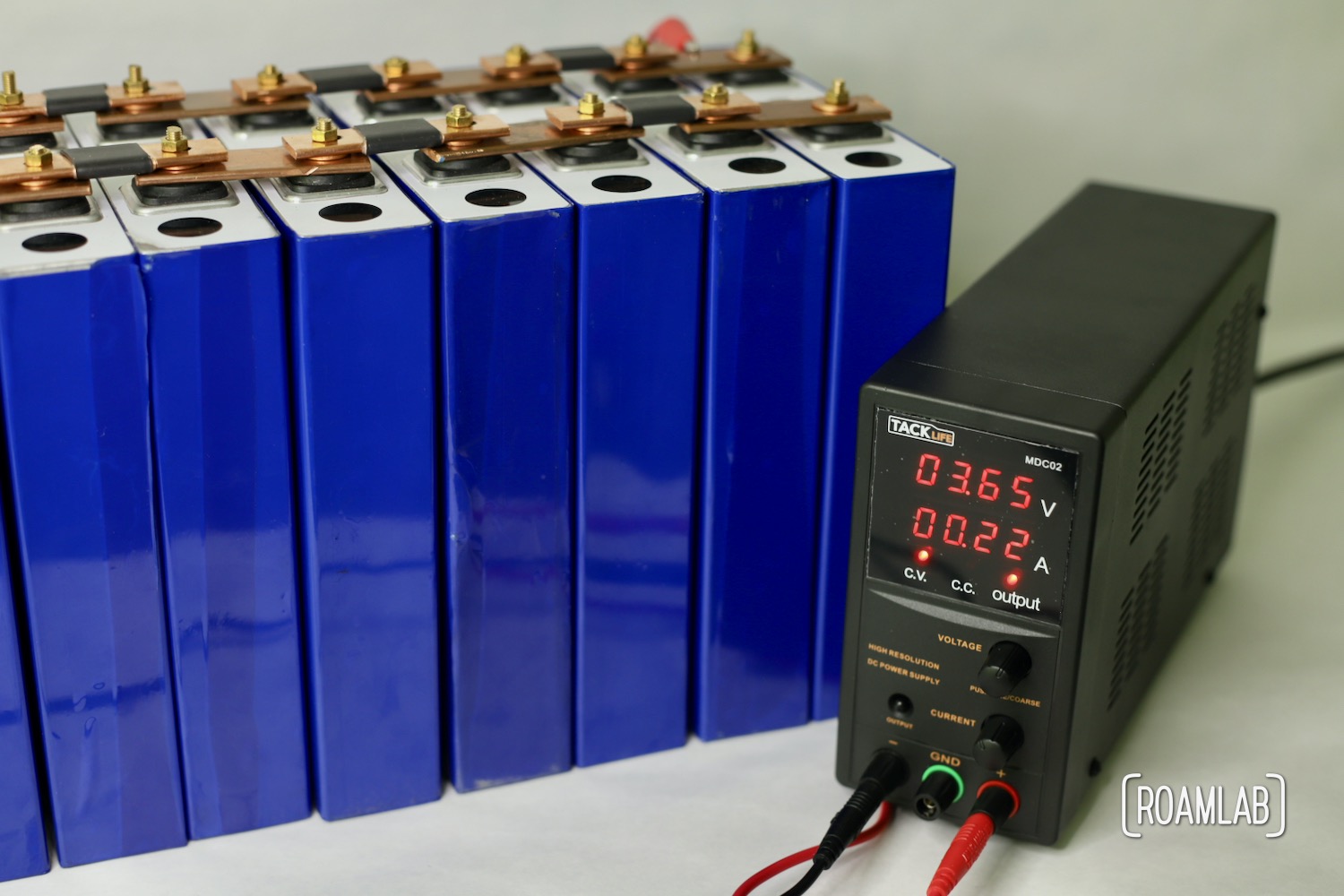

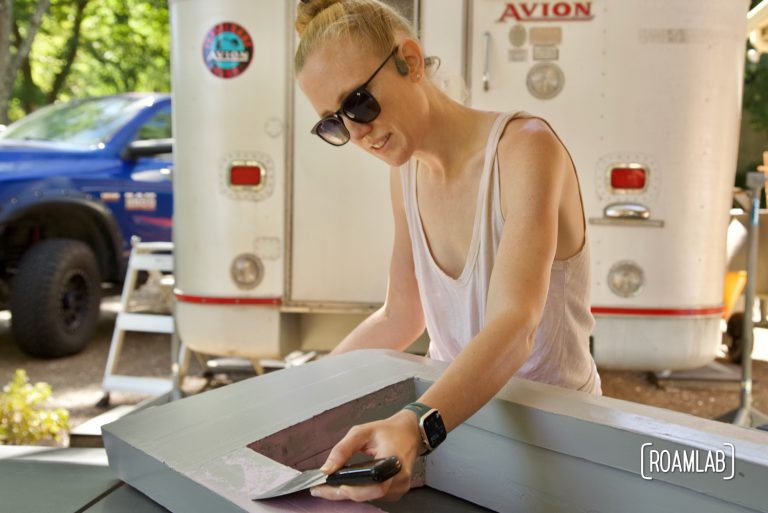

what did u do for thermal management?
Hi Sushrut,
Are you referring to environmental or internal temperatures?